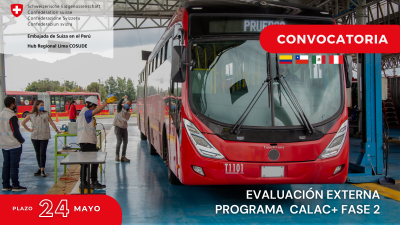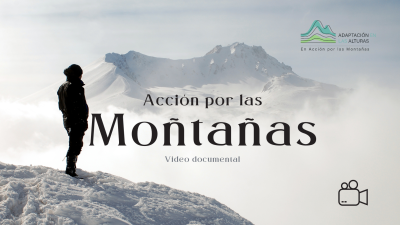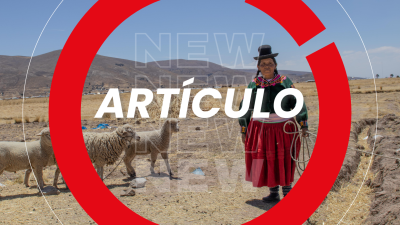The dialogue on climate knowledge in the Andean Highlands was held in the Cuzco Region on August 23 and 24, through the Climandes Project.
In the Cuzco Andes, between the floor of the Huaccaytaqui Valley, Quispicanchis and the Pomacanchi lagoon, in Sangarará, Acomayo, forecasters and agronomists from the National Meteorology and Hydrology Service of Peru – SENAMHI, within the framework of the Climandes project, with technical and financial support from Swiss Cooperation COSUDE, conducted the Second Joint Forecast Meeting – Intercultural Dialogue Spaces – for implementation of the Field Climate Workshops – TCC, training and exchange of climate knowledge, towards articulating efforts and improving risk management in the face of climate variability and change.
This initiative enhances meteorological and climate knowledge from the atmospheric sciences, as well as ancestral knowledge still kept alive thanks to generations of farming grandparents who treasure these indicators to continue adapting to climate variability in the southern Peruvian Andes and makes it possible to work on the design and development of a joint local forecast.
The field climate workshops started on August 23 and 24 in the region of Cuzco. The first day, the venue was the district of Sangarará, province of Acomayo, and the second day, the Huaccaytaqui Tambo, of the Action Platform for Social Inclusion, of the MIDIS, province of Quispicanchis, who received the team from SENAMHI and the Climandes Project specialists and the neighboring communities. The workshop approach used three dynamics: What extreme events have affected the harvest and agriculture; in what stage they affect them; and how do they adapt to such changes; and also identification of climate information barriers, gaps, access to data and needs of SENAMHI.
Grinia Ávalos, national coordinator of the Climandes 2 Project, mentioned: “Within the context of climate change it is important to comprehend how you manage and understand local climate, how we both collaborate to manage risks better, we are grateful for the participation of the Yachachiqs[1]– we would like to have this replicated in the field and climate observation; we have the experience in San Salvador, province of Calca, and an important ally: the PAÍS program, of the Ministry of Development and Social Inclusion – MIDIS, which allows us to reach the communities better. Together, we are carrying out an important task and the Ministries of Culture and Education want to spread this experience in other regions and schools”.
In turn, Nelson Quispe, director of the Meteorological Forecast Office, highlighted the joint work and collaboration ongoing in the Huaccaytaqui community and the importance of exchanging information, which enables learning and joining efforts. “We have been working on this initiative for the past year. We intend to implement a local forecast system using an intercultural approach, where technology is also used as complement with ancestral knowledge.”
These intercultural meetings made it possible to share and show the benefits and importance of climate information in the different stages of the crops, based on exchange of knowledge, where science and technology complement ancestral knowledge of weather and climate in the Andean communities of Peru, to manage risks.
User interface platform and mutual comprehensionThe Climandes Project has been innovating and developing pilot programs in Cuzco and Puno to promote the interface platform with farmers of the Andean areas; these joint dialogue spaces enable the Meteorological Service, from an intercultural approach, to bridge gaps in access to climate information, offer the data in a simple and friendly language for farmers, offer climate services according to the needs of their main crops, recognizing in which phonological stages the crops are affected by the extreme events and in what moment. Thus, they have better access to climate information for our users, and able to assess improvements and opportunities about the products generated by SENAMHI and the follow up measures, between those who generate and provide the climate data and the users.
These spaces are given through the agreement between SENAMHI and MIDIS, through their program PAIS; these local and communitarian platforms are a key axis in the provision of climate services, as well as the work of the Tambo Managers, who are in charge of informing, communicating, disseminating climate information in the local languages, such as Quechua, Aymara or Spanish, to serve the Andean populations most vulnerable to climate change.

Scientific dissemination and mutual comprehension
The monthly educational workshops help Andean farmers to use climate information for decision making in their main crops, such as quinoa, maize or potatoes. It is through the different local media that the project is disseminated and projects this kind of local climate services that are being offered in Cuzco and Puno.
The communication, dissemination, education and training through the monthly educational climate workshops will enable increasing their basic and local knowledge of climate, offering a better interpretation of climate and application on their crops for the local market, reducing economic losses that could be caused by the climate. Furthermore, the identification of the best local media, those with greater reach for spreading climate information, makes it possible to streamline and improve our interface platforms through sound waves, using local radio stations, sending of text messages (SMS) with local weather forecast, as well as the implementation of a local board at the Huaccaytaqui Tambo (Quiquijana, Quispicanchis, Cuzco) radio spots in Quechua, Aymara and Spanish, spaces in local and national television (TV Perú) information sheets, dialogue spaces and round tables with the regional agriculture offices, academia and the Regional Climate Change Council – CORECC, among other active platforms that provide dynamism among climate service actions being implemented by the Climandes 2 project.
You may find images of the workshops in the following links:
 |
|
Image Gallery Climate Workshop in Huaccaytaqui |
 |
|
Image Gallery Climate Workshop in Sangarará |
Climandes 2 is an initiative of the Global Program for Climate Change and Environment of the Swiss Agency for Development and Cooperation (COSUDE) in Alliance with the World Meteorological Organization (WMO) the meteorological services of Switzerland (MeteoSwiss) and Peru (SENAMHI) the academy, the civil society and the private sector for implementation of the Global Framework for Climate Services. The project seeks to provide reliable and timely climate services for decision making in the search of more resilient development in the face of climate variability.
Useful links:
CLIMANDES Project, project sheet, Swiss Embassy, Swiss Agency for Development and Cooperation – COSUDE
Web Climandes Project
Web National Meteorology and Hydrology Service of Peru
Web La Molina Agrarian University
Web World Meteorological Organization
Web MeteoSwiss
[1] Quechua Word that refers to wise persons and teachers who share ancestral knowledge.








